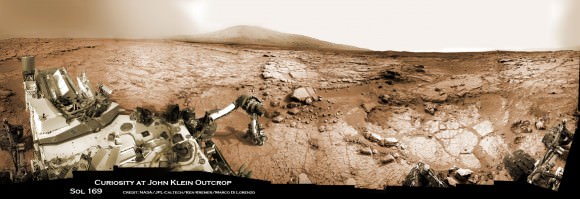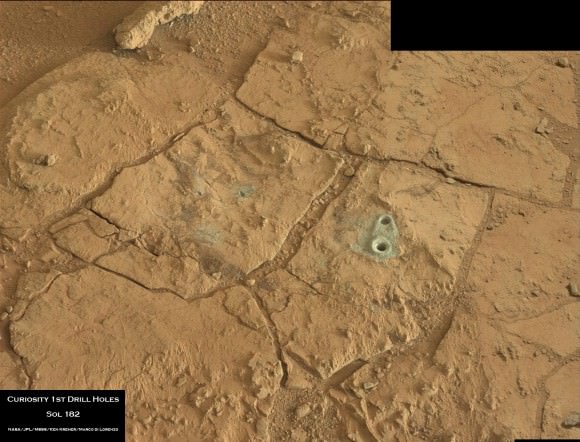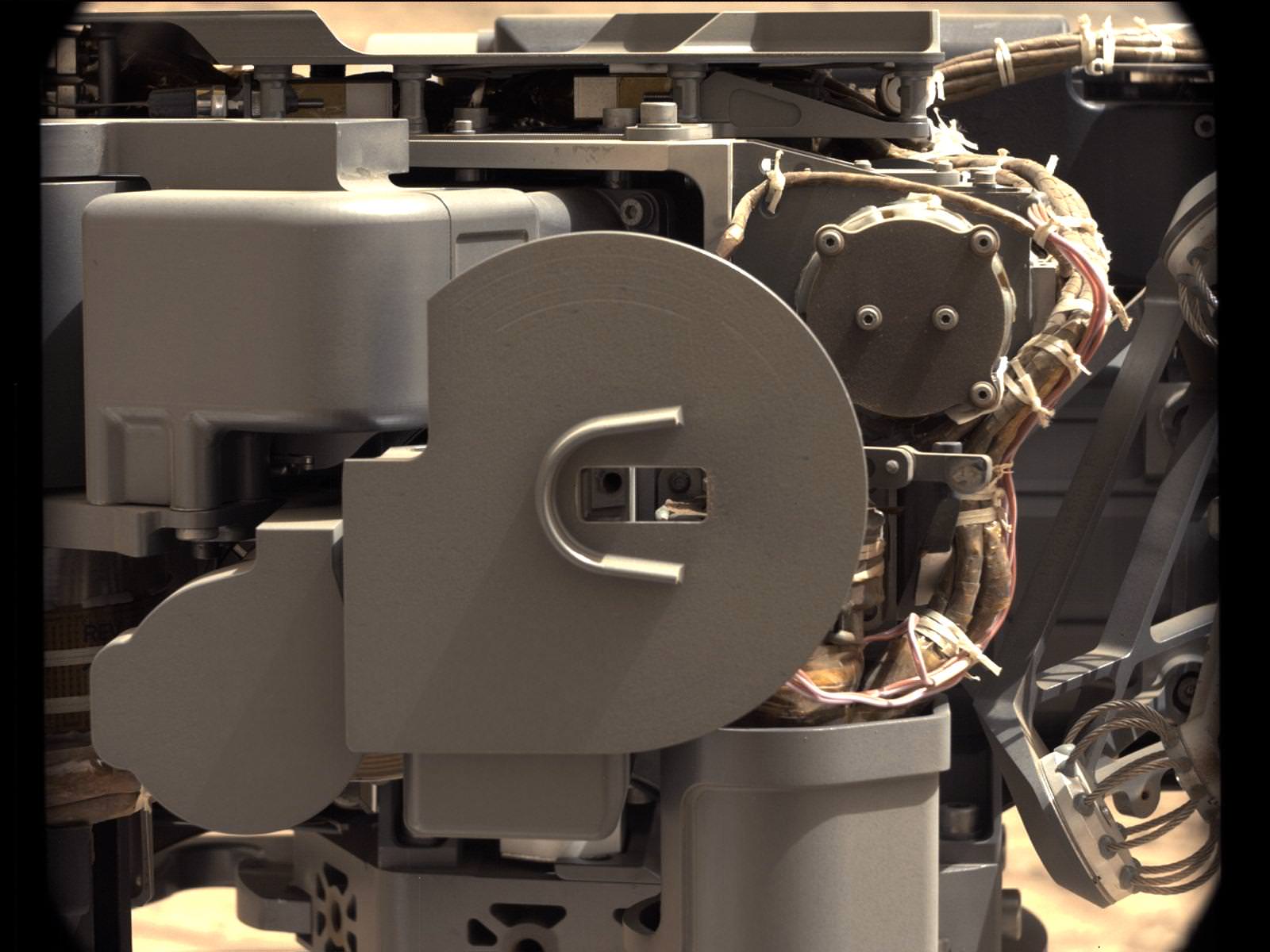NASA’s Curiosity rover has eaten the 1st ever samples of gray rocky powder cored from the interior of a Martian rock.
The robotic arm delivered aspirin sized samples of the pulverized powder to the rover’s Chemistry and Mineralogy (CheMin) and Sample Analysis at Mars (SAM) instruments this past weekend on Feb. 22 and 23, or Sols 195 and 196 respectively.
Both of Curiosity’s chemistry labs have already begun analyzing the samples – but don’t expect results anytime soon because of the complexity of the operation involved.
“Analysis has begun and could take weeks,’ NASA JPL spokesman Guy Webster told Universe Today.
The samples were collected from the rover’s 1st drilling site known as ‘John Klein’ – comprised of a red colored slab of flat, fine-grained, sedimentary bedrock shot through with mineral veins of Calcium Sulfate that formed in water.
“Data from the instruments have confirmed the deliveries,” said Curiosity Mission Manager Jennifer Trosper of NASA’s Jet Propulsion Laboratory, Pasadena, Calif.
On Feb. 8, 2013 (mission Sol 182), Curiosity used the rotary-percussion drill mounted on the tool turret at the end of the 7 foot (2.1 meter) long robotic arm to bore a circular hole about 0.63 inch (16 mm) wide and about 2.5 inches (64 mm) deep into ‘John Klein’ that produced a slurry of gray tailings

The gray colored tailings give a completely fresh insight into Mars that offers a stark contrast to the prevailing views of reddish-orange rusty, oxidized dust.
The eventual results from SAM and CheMin may give clues about what exactly does the color change mean. One theory is that it might be related to different oxidations states of iron that could potentially inform us about the habitability of Mars insides the rover’s Gale Crater landing site.
“The rock drilling capability is a significant advancement. It allows us to go beyond the surface layer of the rock, unlocking a time capsule of evidence about the state of Mars going back 3 or 4 Billion years,” said Louise Jandura of JPL and Curiosity’s chief engineer for the sampling system.
Additional portions of the first John Klein sample could be delivered to SAM and CheMin if the results warrant. The state-of-the-art instruments are testing the gray powder to elucidate the chemical composition and search for simple and complex organic molecules based on carbon, which are the building blocks of life as we know it.

The Curiosity science team believes that this work area inside Gale Crater called Yellowknife Bay, experienced repeated percolation of flowing liquid water long ago when Mars was warmer and wetter – and therefore was potentially more hospitable to the possible evolution of life.
Curiosity is nearly 7 months into her 2 year long primary mission. So far she has snapped over 45,000 images.
“The mission is discovery driven,” says John Grotzinger, the Curiosity mission’s chief scientist of the California Institute of Technology.
The rover will likely remain in the John Klein area for several more weeks to a month or more to obtain a more complete scientific characterization of the area which has seen repeated episodes of flowing water.
Eventually, the six-wheeled mega rover will set off on a nearly year long trek to her main destination – the sedimentary layers of the lower reaches of the 3 mile (5 km) high mountain named Mount Sharp – some 6 miles (10 km) away.


Bad rover! Spit it out!
Weeks? Sheesh.. Oh well… we’ve waited this long… what’s a few more (EEEEK!) weeks?
More PR, rather than science, statement from engineer:
“The rock drilling capability…allows us to go beyond the surface layer of the rock, unlocking a time capsule of evidence about the state of Mars going back 3 or 4 Billion years,”
It’s unlikely that just by drilling a few cm into a rock would “unlock” Mars’ 4 billion years geologic history. Drilling just gets you under a few cm of surficial deposits. To get at billion-year history, you have to be lucky to find the right outcrop.
A rock is just a rock, but a context is a geology.
As far as I understand, the science team know or suspect that the basement layer that Curiosity is probing is about 3-4 billion years. The Gale crater has likely at some time been completely filled with aeolian deposits, then eroded down to uncover fresh history.
And the John Klein outcrop is permeated by veins that has been refilled during the early, wet period. “The samples were collected from the rover’s 1st drilling site known as ‘John Klein’ – comprised of a red colored slab of flat, fine-grained, sedimentary bedrock shot through with mineral veins of Calcium Sulfate that formed in water.” See the image.
Other articles describe how the Curiosity team expects, from laser sampling I think, to get some of those veins and their preserved material with the drilled material. If it has organics, it would give evidence of the early history of Mars.
So is John Klein “the right outcrop”? Seems the C team thinks so.
Precisely my point: Why is there more science in your post than there is in the quoted, and I must say, quite vapid, statement by the NASA/JPL engineer?
Nom nom nom!
It’s soooo hard to wait. I hope/expect it tastes organic. Bet it tastes like corporate junk food, Twinkies, Cheesits, Oreos, and the like.
Will be interesting once humans can actually explore there
-Kenneth Fingerman